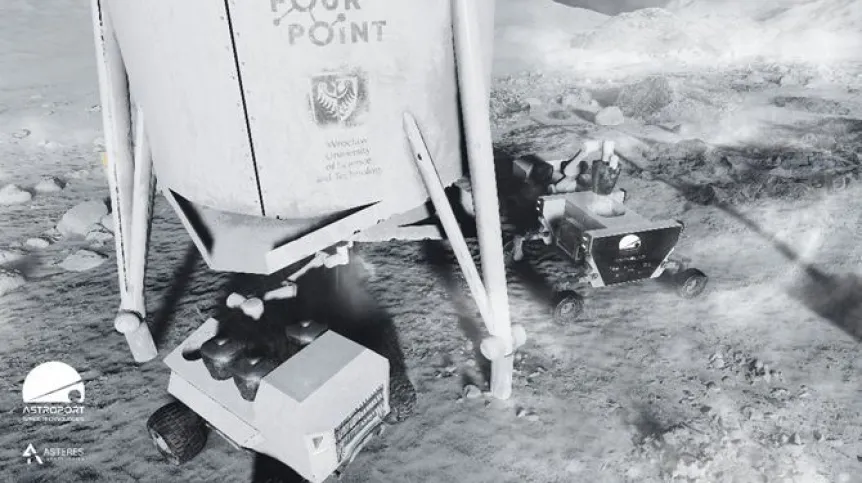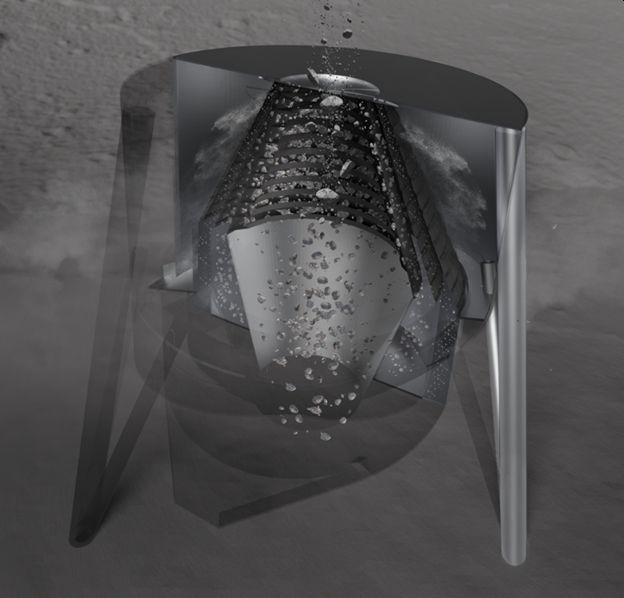
Researchers from Wrocław University of Science and Technology, in collaboration with the Wrocław-based company Four Point, have designed a groundbreaking device to sieve lunar soil, known as regolith, for use in building infrastructure on the Moon.
The innovative device, developed as part of NASA's Lunar Surface Site Preparation for Landing/Launch Pad and Blast Shield Construction project, aims to make the Moon a more habitable and sustainable environment for future space exploration.
Regolith, the fine dust and rocky material found on the lunar surface, holds significant potential for creating building materials like regolith bricks.
However, the key challenge lies in separating the smallest particles of regolith from larger stones, which is essential for producing high-quality bricks. While Earth-based methods such as using water, air, or gravity work well for sorting materials, these techniques are unfeasible on the Moon, which lacks water and a breathable atmosphere.

Damian Pietrusiak, PhD, from the Faculty of Mechanical Engineering at Wrocław University of Science and Technology, says that traditional sorting methods won’t work on the Moon. “We can’t use water or air like we do on Earth. The lack of atmosphere and gravity means we need a different solution,” he said.
To overcome these challenges, the researchers developed a device that relies entirely on centrifugal force to sort regolith. The separator uses a rotating conical drum with an integrated spiral inside, both of which spin at the same speed. The centrifugal force causes larger regolith particles to travel along the spiral to the bottom of the drum, while finer particles are thrown outward to the walls of the cone. These smaller particles then exit the separator through small holes and are collected in an external container.
The device will help sort the regolith into two useful fractions: the fine dust, which can be used to produce regolith bricks, and larger pieces, which can be used for constructing bases or filling bags to create protective embankments around landing sites.
“We have developed a mechanism that allows us to separate fine particles for sintering bricks, while the larger pieces can be used for construction foundations or other purposes,” says Pietrusiak. “This separator could also have future applications in processes like extracting oxygen or producing metals from lunar regolith.”
Though designed for use on the Moon, the separator's potential goes beyond space exploration. The technology could also be applied on Earth in environments with limited access to water, where traditional sieving methods may not be feasible. This makes the separator an exciting prospect for a variety of industries, particularly in arid or remote regions where water conservation is critical.
The device is part of a larger effort by NASA and its partners to develop sustainable technologies for lunar exploration. As part of the Lunar Surface Site Preparation project, the ultimate goal is to create infrastructure on the Moon, including Lunar Launch and Landing Pads (LLPs), using the Moon’s own resources. The concept is central to the development of Astroport’s Lunatron® BrickLayer technology, which autonomously melts, shapes, and places regolith bricks to create durable building materials for lunar habitats.
Astroport Space Technologies, which is leading the NASA project, has already purchased a license for the new regolith separator and is planning initial tests with simplified models of the device. The technology has been patented, ensuring that this innovation will be protected as part of the ongoing development of lunar infrastructure.
Looking ahead, Pietrusiak and his team envision even broader applications for their regolith separator, not just on the Moon, but in space exploration in general. The ability to efficiently separate and utilize lunar regolith could become a cornerstone for future space missions, enabling the construction of everything from landing pads to habitats without relying on Earth-based supplies.
(PAP)
PAP - Science in Poland
ros/ agt/ kap/
tr. RL













